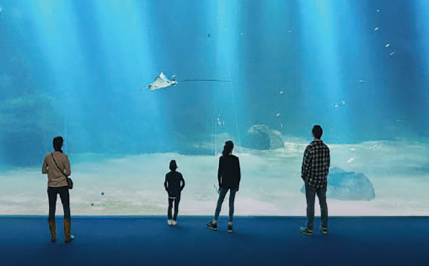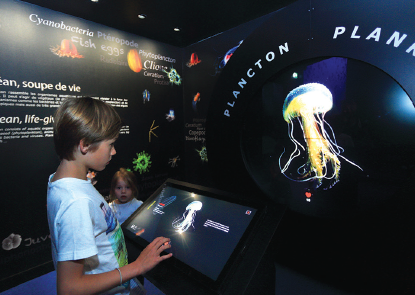
Ireland's No. 1 FREE magazines for parents & teachers of primary school children

Ireland's No. 1 FREE magazines for parents & teachers of primary school children
 Earlier this year Primary Times was invited to visit Nausicaá, the largest public aquarium in Europe. Located in the coastal town of Boulogne-sur-Mer, in Northern France, NAUSICAÁ is a vast 10,000 square meters , built in the shape of a Manta Ray and home to 1600 species and 60,000 sea animals. NAUSICAÁ is a UNESCO “Centre of Excellence” and a center for discovering our unique marine environment, offering a fun, educational and scientific experience, that focuses on the relationship between humans and the sea.
Earlier this year Primary Times was invited to visit Nausicaá, the largest public aquarium in Europe. Located in the coastal town of Boulogne-sur-Mer, in Northern France, NAUSICAÁ is a vast 10,000 square meters , built in the shape of a Manta Ray and home to 1600 species and 60,000 sea animals. NAUSICAÁ is a UNESCO “Centre of Excellence” and a center for discovering our unique marine environment, offering a fun, educational and scientific experience, that focuses on the relationship between humans and the sea.
Guaranteed to amaze and delight all sea lovers, a school tour to this region or a family break offers lots of fun and learning and what better way to teach children the value of our oceans, and the need to protect and preserve this very delicately balanced ecosystem, that produces not only food and leisure but also marine medicines, minerals, energy resources. Oceans are responsible for 70% of the oxygen on earth and play a critical role in removing carbon from the atmosphere. Information from deep-ocean exploration can help predict earthquakes and tsunamis and help us understand how we are affecting and being affected by changes in the Earth's environment.
Nausicaa tells the full story their newly opened exhibit “Journey on the High Seas” offers a totally immersive 4D experience as you go under the sea and observe from multiple viewpoints the spectacle of hammerhead sharks, giant manta rays and shoals of dorys, clownfish and every sea creature imaginable in Nemo’s kingdom!
The space is a reproduction of Malpelo Island, off the coast of Colombia. The extraordinary scale of the structure makes it truly an architectural, audiological and technical feat, created at NAUSICAÁ for the first time in Europe. The Shores And Man exhibits include the coral reef, the tropical lagoon, a submerged forest and we all doted over colonies of penguins and sea lions, not to mention the spectacular jellyfish.
The Nausicaá team consists of scientific mediators and teachers who will create workshops and animations designed to increase the educational interest of your visit and online educational tools to bring the ocean into your classroom.
The region is also of great historical interest and you can easily make the journey along the spectacular Opal coastline to La Maison du Site des Deux Caps, here we hired e-bikes and rode to Cap Gris Nez, the closest point of France to England (only 33 kilometres awayand withthe white cliffs of Dover very visible ). The area is dotted with a lot of German bunkers. and on the top of the cliff are the ruins of an English fortress, built by Henry VIII at the beginning of the 16th century.
We stayed in the port town of Boulogne-sur-Mer and experienced all things French oh la la! Children will enjoy visits to the Boulangerie who can organise croissant baking demonstrations, tastings, and you can arrange for your group to make their own pain-au-chocolat, whilst practicing their French! At the top of the town, lies the ‘old town’, which is walled and is dominated by the belfry and dome of the Cathedral. Here you will find quaint cobbled streets and a myriad of beautiful buildings of historical charm. In the fascinating crypt of the Cathedral, that houses 2,000-year-old Romain remains and priceless artefacts and jewellery you can still see the stone cannonballs employed by Henry VIII when he besieged and captured Boulogne. Boulogne -sur -Mer has so much to offer, enquire now for an unforgettable school tour or family break.

Marie travelled courtesy of Atout France and stayed at the recently renovated Hôtel Metropole, prices start from €70 per night.
Adult ticket: €25.90/ children €19.50/ children under three go free.
For further information on their school tours see www.nausicaa.co.uk /school